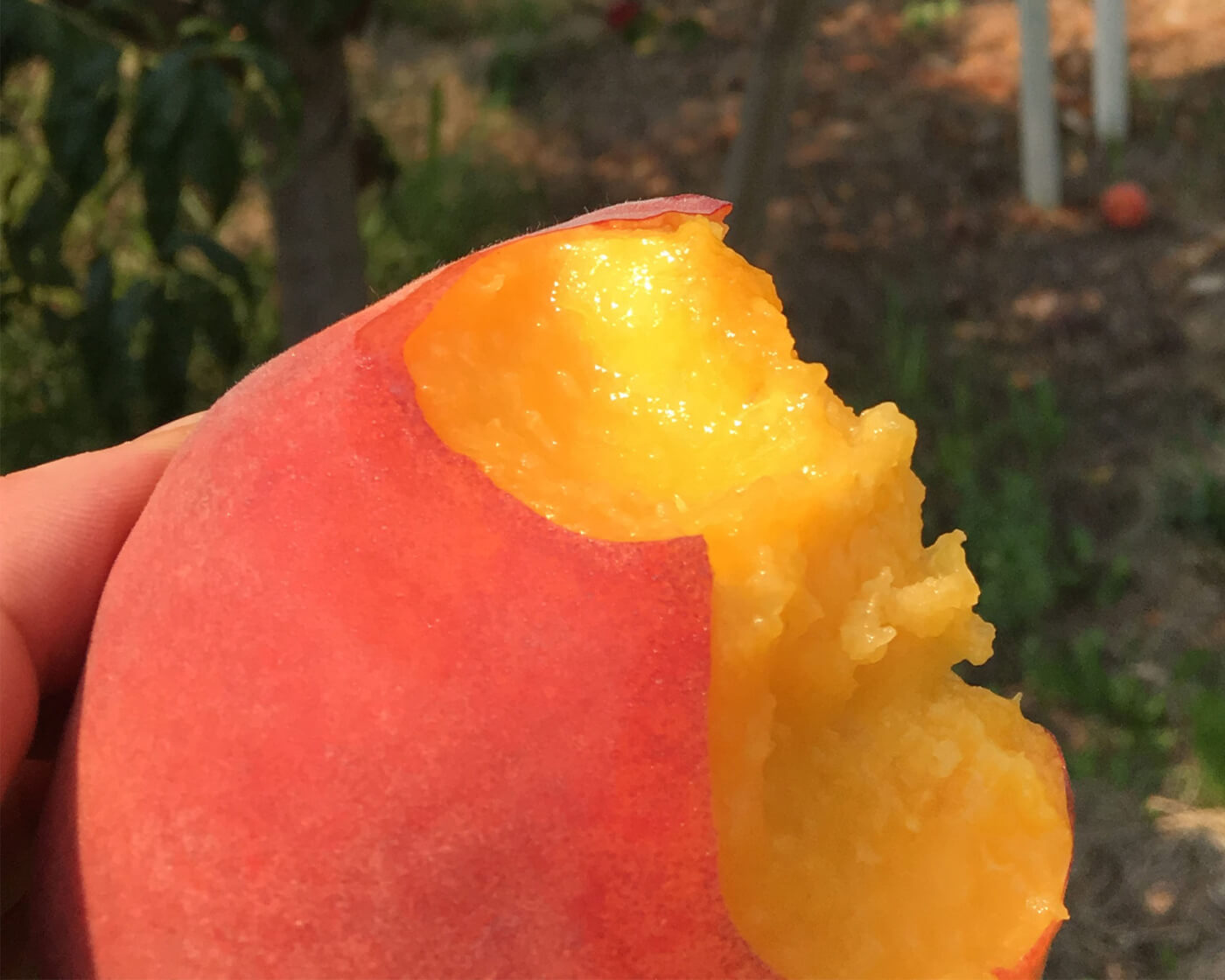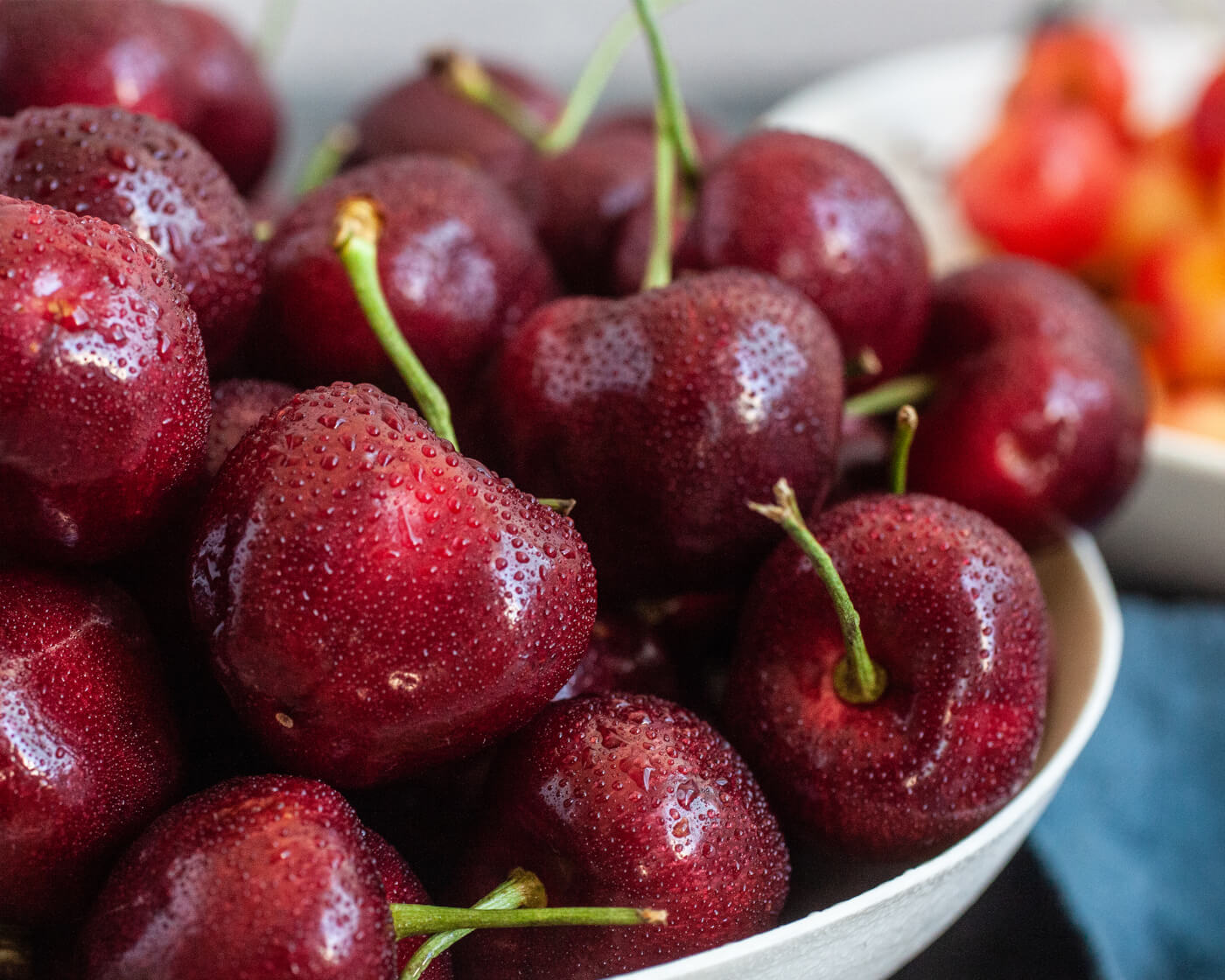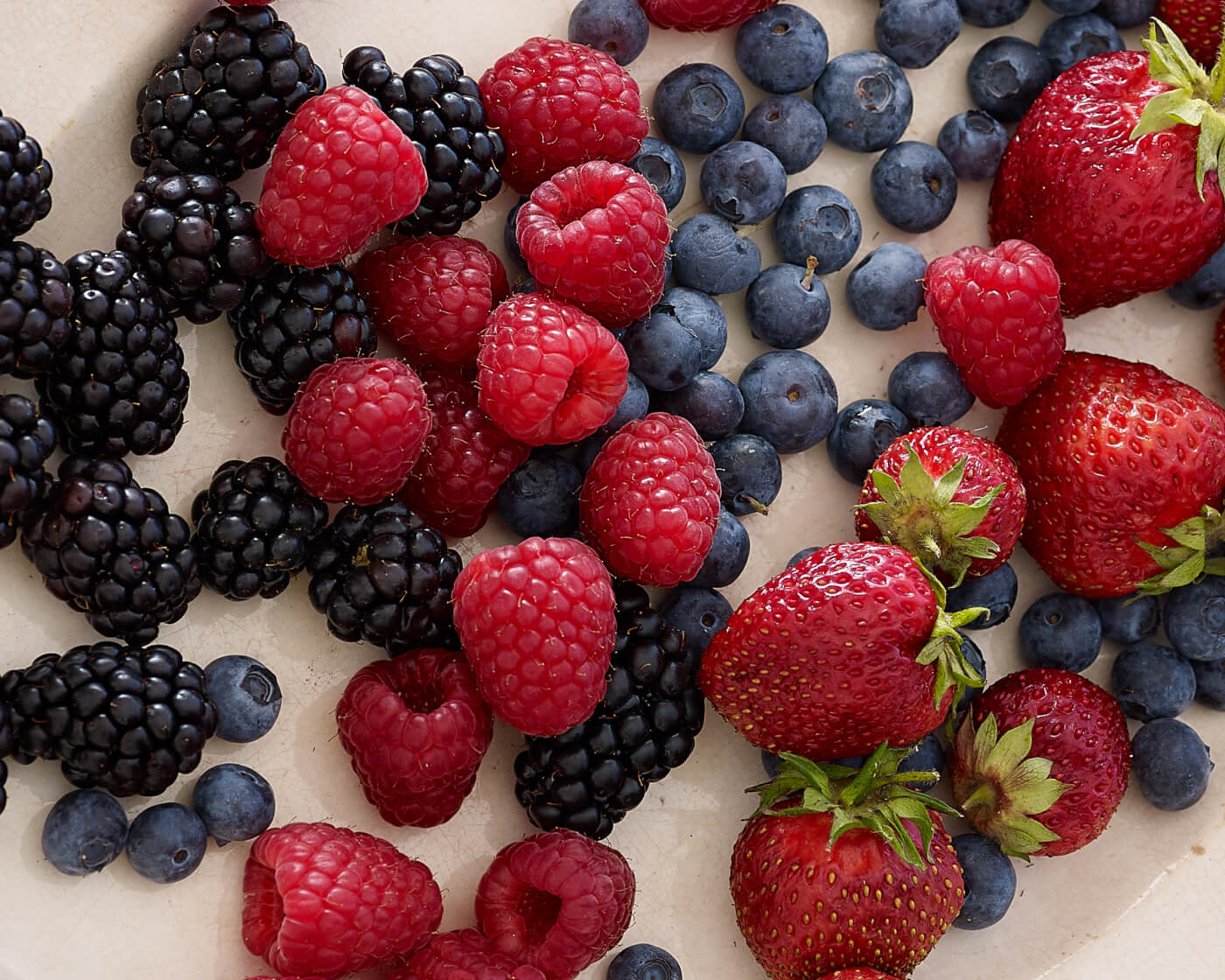101
For the people in the back, let’s start with the basics: Figs are thin-skinned fruits with soft, seedy centers that grow on deciduous trees. At least, we call them fruit colloquially, but technically, they’re botanical structures that contain a whole interior web of tiny fruits, which each have a single seed. (A single fig can have more than 1,000 fruits inside.) Biting into a sweet, ripe fig tastes like eating a spoonful of strawberry jam drizzled with good honey. They’re delicious, and their season is fleeting.
In stores, you may be surprised to see local figs here early in the summer. That’s because many types of fig trees give two crops: a first smaller yield, early in the growing season, then a larger main harvest in the late summer or fall. As each wave unfolds, you’ll see a wide variety of figs, with different shapes and sizes, and colors ranging from purple-black to brown to green-and yellow-striped. All figs have edible skin, with sweet, soft, seedy centers that literally melt as you chew them. But only a few weeks after they arrive, they’re gone.
How to Buy Figs
When you buy figs, look for dry, smooth, plump-looking specimens. The figs should be soft but not actually mushy. (Remember to look with your eyes like your mother told you, because one little squeeze can cause the rather delicate fruit to start spoiling.) Also, you want something that’s ready to eat the day you buy it; a fig isn’t the type of fruit you leave on your counter to soften, because it doesn’t ripen much after it’s picked. If you’re a sniffer, you want something that smells sweet and floral, but not at all funky or sour, which means it has probably started to ferment or spoil on the inside.
Storing Figs
Once you bring figs home, you can keep them at room temperature for a day or two, or refrigerate them for three or four days. In either case, spread them out on a plate right when you get them home, so they don’t crush each other. Only rinse them just before eating. The flavor really is best when they’re fresh and at room temperature, so if you’re a planner, plan to stand at the counter and eat them all before you put the rest of the groceries away.
Our Favorite Fig Types

As you explore different types of figs, you’ll learn that certain varieties have firmer or softer skins (and those skins have more or less flavor), and that some are more or less candylike. From the more common Brown Turkey fig to delicate, jam-sweet Adriatic figs, they’re all worth a taste.
BLACK MISSION
Teardrop-shaped black mission figs have a thicker deep purple skin that borders on black, with honey-sweet pink centers with a bit of minerality. They’re often smaller than other figs, and maintain their shape well when sliced.
ADRIATIC
Native to central Italy, light green or yellow-green Adriatic figs have exceptional sweetness, and are sometimes compared to strawberry or raspberry jam. Also called “white figs,” this rounder fig has deep magenta-colored flesh.
TIGER STRIPE
Tiger Stripe figs, also known as Candy Stripe figs, are a type of Adriatic fig with pale yellow skin with green stripes. Like Adriatics, they’re super sweet and sticky inside, with berry overtones.
CALIMYRNA
Grassy green in color, large Calimyrnas have a nutty taste and red insides (like a watermelon!) and are also often found dried. They’re named for their agricultural history—growers in California found figs originally from Smyrna, Turkey were perfectly suited to California’s Mediterranean-like climate.
KADOTA
Green Kadota figs have a pale, silky flesh, and are among the least sweet figs, with more white flesh between the skin and the seeds. Use Kadota figs in savory cooking, when you want fig flavor without much jamminess, or in making homemade fig sandwich cookies.
BROWN TURKEY
Brown Turkey figs, also known as Purple Turkey or just Turkey figs, often have mottled brown or dark purple skin, sometimes tinged with green. They’re larger and less sweet than some of their cousins, so they’re great where you want sweetness but not overwhelming flavor—think salads and savory toppings.
What to Do with Fresh Figs
If you’re not eating them straight up, figs are excellent negotiators in the kitchen; because they’re naturally mild and sweet, they make good partners with rich or powerful flavors, like blue and goat cheeses, cured meats, and nuts. Try the traditional pairing of figs and pigs—it’s a thing—in our recipes for Bruschetta with Prosciutto and Hazelnuts. You can amp up figs’ sweetness by pairing them with honey (like on our Fresh Fruit Tart), or use them to bring unexpected sweetness to savory dishes like a Fresh Fig and Heirloom Tomato Salad or Grilled Figs with Cheese and Dukkah. Keep it simple and toss a few on a cheeseboard, they’re sure to be gobbled up.






